Do the Police Actually Solve Crime?
Nine out of 10 crime reports go nowhere.
by Aaron Bastani
29 April 2021
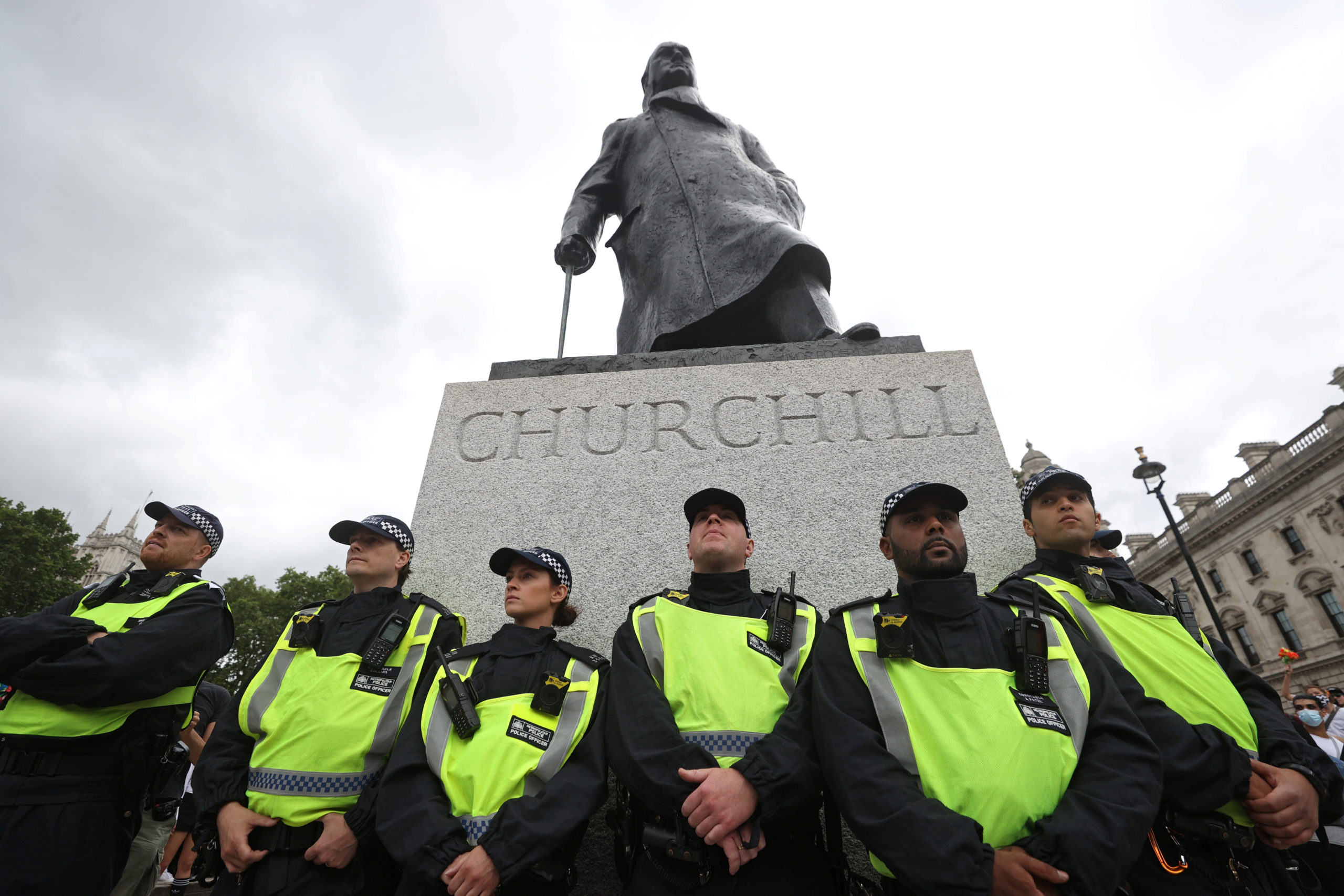
The crime drama has long been popular in both literature and on television, but during repeated lockdowns its appeal has seemingly scaled yet greater heights. Whether it’s the BBC’s Line of Duty and Bloodlands, or the slate of gory ‘true crime’ dramas, from The Yorkshire Ripper on ITV to Zac Efron playing Ted Bundy on Netflix, it has often felt like little else is being broadcast.
While many of these efforts are more cerebral than copaganda offerings like Brooklyn Nine-Nine or COPS – the reality show that ran for more than three decades – and often carry implicit critiques of the police themselves, their fundamental assumptions remain the same. The first is that crime is pervasive and can not be escaped. The second is that a significant number of crimes, from ritualised serial murder to high-level corruption within the police, are solved.
On both counts such representations are wrong. Not only is crime, by historic standards, relatively low but the police themselves are remarkably ineffective at solving it.
How much crime is there?
For all the sensationalist headlines and well-polished TV dramas, Britain, by any meaningful standard, is an incredibly safe country. Measured on rates of intentional homicide, it ranks among the lowest worldwide at 124 out of 167 countries listed, putting it somewhere between Cyprus and Bhutan. Using the slightly more nuanced methodology of the Global Peace Index, which includes the availability of firearms, rates of violent crime and political instability, Britain was the 42nd safest country out of 163 measured in 2020. France, by comparison, placed 66th and the United States 121st.
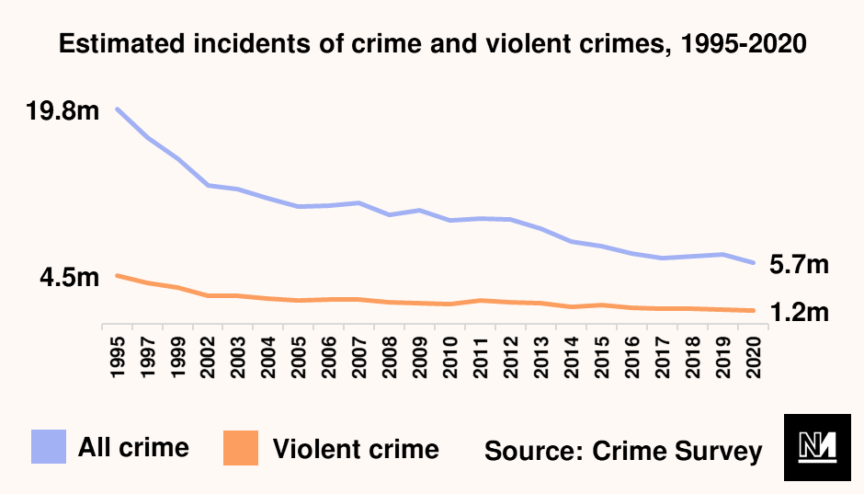
Alongside these statistics is the extraordinary fact that almost every kind of crime has fallen over the last 25 years. In 1994-5 there were 4.2 million violent crimes recorded in England and Wales, twenty years later that had fallen to 1.32 million. In 2015, the crime survey for England and Wales found that crime was at its lowest level since the survey began in 1981. This is not to diminish crimes that still happen – sometimes violent, life-altering and even fatal – but to highlight that any assertion that crime is historically high is at odds with the evidence. As the chart below makes clear, in 2018 hospital admissions for assault in England were at an all-time low.
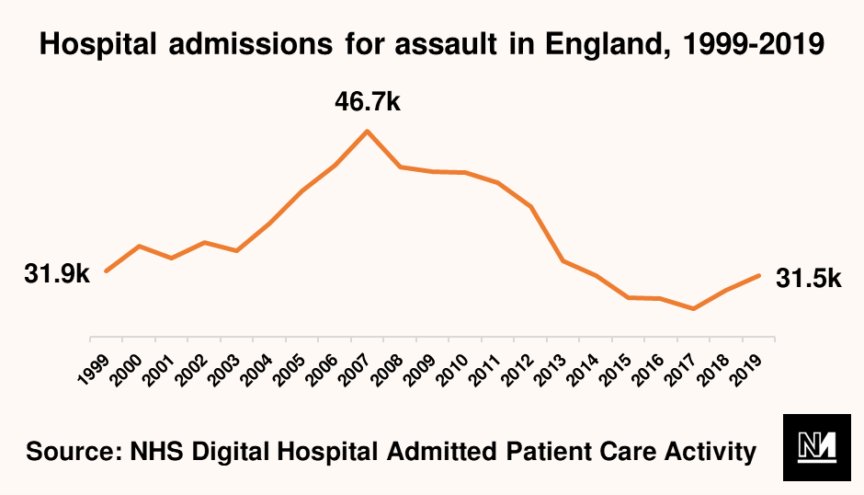
While profoundly different on matters of criminal justice, and far less safe, the United States – like many other countries – has found itself on a similar trajectory to the UK. Between 1993 and 2019 violent crime in the US fell by 49%, robbery by 68%, murder and non-negligent manslaughter by 47%, and aggravated assault by 43%. Yet despite such a monumental shift the public thought crime was going up, something researchers also found in the UK a decade ago. This is likely the result of media sensationalism combined with opportunistic politicians liable to exaggerate the problem, or conveniently ignore historic context, for their own ends.
Under the Conservatives, with violent crime soaring & charge rates down, criminals have never had it so good.
That must change. @UKLabour has a plan to put more police in our communities, end the cuts to preventative services, and put the rights of victims into law.#VoteLabour pic.twitter.com/KWEDeyEhPl
— Nick Thomas-Symonds MP (@NickTorfaen) March 31, 2021
Of course one response to this is that the 1990s saw more police officers who were given even greater powers – a trend embodied in the broken-windows policing strategy pioneered in New York City, and later adopted elsewhere. Yet according to the Brennan Center, increased hiring of police officers only meant a “modest, downward effect on crime in the 1990s, likely 0 to 10%”, with other factors having a greater impact.
While former mayor Rudy Giuliani and NYPD Commissioner Bill Bratton took credit for falling crime after assuming their roles in 1994, the downward trend in New York actually began in 1990. Crime also continued to decline after the NYPD largely abandoned its stop-and-frisk policy in 2013. This is congruent with the conclusions of the Brennan Center report, which found that increased incarceration had a minimal effect on reducing property crime in the 1990s, and had no effect on violent crime. In the 2000s increased incarceration again had no effect on violent crime and accounted for less than 1% of the decade’s property crime drop.
There are a number of theories for what caused that historic decline in crime in the early 1990s, from economic growth to greater use of antidepressants and the increasingly widespread adoption of mobile phones. When it comes to more officers, however, even the deterrent effect appears minimal.
The police do not prevent crime or solve it.
Alongside the trend of falling crime, is a fact that seems equally incontrovertible: there is no correlation between the number of police officers in a country and the crime rate. Policing scholar David Bayley repeatedly stresses this fact in his work, concluding: “the police do not prevent crime. This is one of the best-kept secrets of modern life. Experts know it, the police know it, but the public does not know it”.
Michelle Alexander, author of The New Jim Crow writes that “we need an effective system of crime prevention and control in our communities”, but instead of offering this the current system “appears better designed to create crime and a perpetual class of people labelled criminals”.
The police don’t prevent crime from happening, but do they solve it? According to the data, no. In 2019 the Home Office reported that just 7.8% of all recorded offences resulted in a charge or summons. For violent crime that figure was 8%, for robbery it was 7%, for theft it was 6%, and for sexual offences other than rape it was 3.5%. To stress: this was merely for those crimes that were reported.
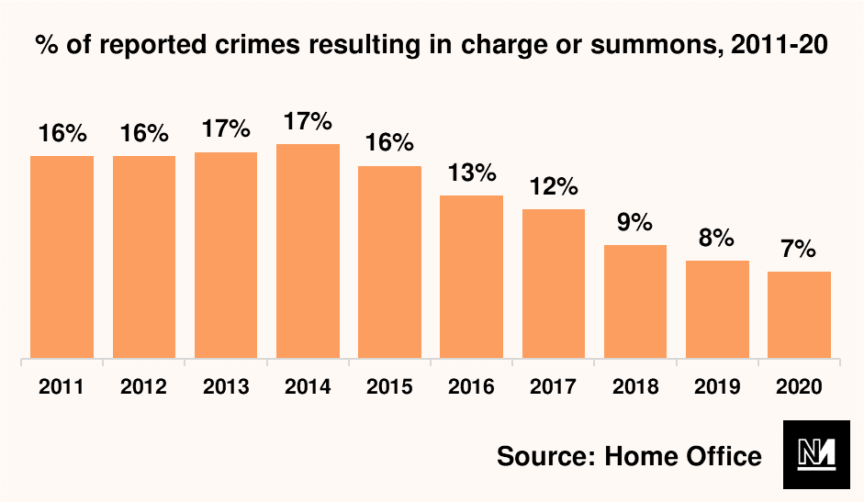
Across the Atlantic things appear to be even worse, with one academic concluding that police in the US solve just 2% of all reported major crime. Again, it is important to take into account that the majority of crime likely remains unreported, with Pew Research concluding in 2015 that only 47% of those subject to violent crime actually contact the police, a figure which falls to 35% for victims of property crime. It’s hard to understand why such systematic failure remains so immune from criticism.
In Britain, the police now openly concede that the likelihood of solving a crime is so low victims increasingly don’t bother to pursue justice. As Matt Parr, HM inspector of constabulary, put it last year: “most of the public simply give up reporting it (crime) because the chances of anything positive happening are so slim.” Far from hyperbolic, this is in fact in line with the Met’s own guidelines, which state, “shoplifting, car crime and criminal damage are among the “lower level” offences that officers may not probe”. The police have given up on policing.
Austerity and policing.
In Britain, at least, a simple explanation is readily available for why so few crimes are solved: that after a decade of austerity, successive Conservative governments have eroded the capacity of the police to do their job.
The extent of policing cuts is undeniable, with the National Audit Office concluding in 2018 that there had been a 19% drop in funding since 2010, while the number of police employees had fallen from 244,497 to 199,752 over the same period.
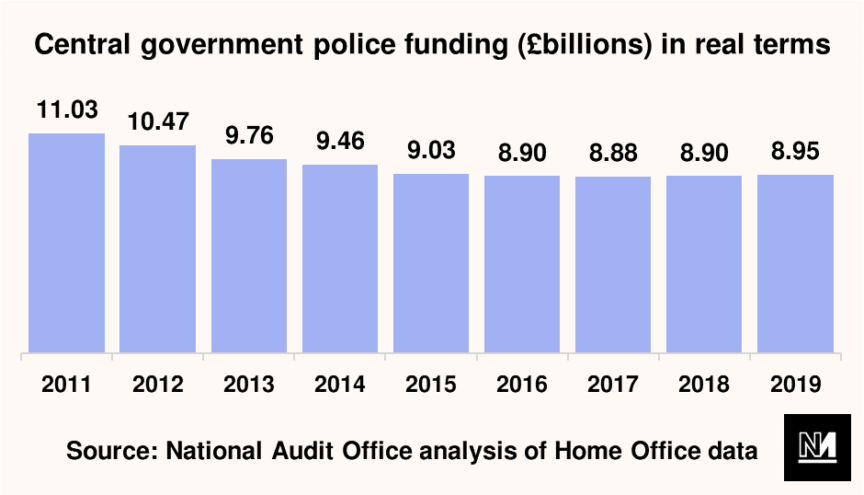
It should come as no surprise, then, that the number of reported crimes ending in prosecution has halved in the last five years, with the lamentable figure of 7.8% of reported crimes ending in a prosecution down from the record high of 15% in 2015.
Yet while there is an undeniable correlation at work, what does it say of the system when at its high point in 2015, we still saw fewer than one in five reported crimes end in a prosecution? Again, it’s hard to imagine such figures – now yearned for by Britain’s party of opposition – being presented as success anywhere else.
And while cuts have happened, police forces in England and Wales still command massive resources, employing almost 200,000 people and enjoying an annual budget of £15bn. Given all that only yields a tiny number of prosecutions – at the best of times – it would appear that properly addressing issues of law and order is bigger than simply throwing more money at the police.
Safe countries have low inequality and fewer police.
The safest countries in the world tend to have smaller police forces – a fact which further undermines the claim more police equals less crime. Those European countries which enjoy the lowest crime rates, such as Switzerland, Norway, Sweden, Denmark, Finland and Iceland, all have fewer officers per head than England and Wales. Meanwhile, beyond Europe, Singapore, New Zealand and Japan enjoy some of the lowest crime rates worldwide while also having comparatively fewer officers. In 2014, just four people were fatal victims of gun crime in Japan, the lowest in the world outside of Iceland and Luxembourg. But while Iceland has a population the size of Leicester, Japan is home to more than 124 million people.
At the same time countries such as Mexico, Russia, and Colombia – which experience some of the highest crime rates on Earth – have more officers relative to population than England and Wales. Brazil, meanwhile, has similar levels of policing while homicide rates are more than twenty times as high. An informed response to this is to state that these countries are major sites of drug production and distribution, and therefore endure higher levels of serious crime. This may be true, but the point remains the same: higher levels of policing have achieved little. It’s a strategy which by any empirical measure doesn’t seem to work.
So if more police isn’t the answer, what is the best strategy to fight crime? The answer should be obvious enough: reduce inequality. Indeed the most equal countries in the world are generally the least violent, with Japan and the Scandinavian countries conspicuous among the OECD nations for their low inequality, low crime rates and low levels of policing. As Richard Wilkinson and Kate Pickett write in the much-acclaimed Spirit Level: “if you fail to avoid high inequality you will need more prisons and more police”.
The relationship between higher levels of policing and inequality makes sense when one realises the amount of time spent by police on things such as street homelessness, drug possession and the low-level harassment of working-class and minority communities. Any sensible approach would aim to eliminate homelessness and decriminalise at least the possession of small quantities of drugs, as well as reducing economic inequality across income and racial groups. And yet, at present, such measures are considered less ‘pragmatic’ than simply spending more money on the ‘thin blue line’.
To emphasise how little more police can accomplish, take the example of America’s schools. Around 42% of schools in the US have at least one police officer on campus and, according to the US Department of Education, 92,000 arrests were made in the 2010-11 school year. This allocation of resources means cost-cutting elsewhere, with 14 million students in schools with a police presence but without a counsellor, nurse, psychologist, or social worker.
Would anyone seriously contend that the presence of police in America’s schools, and tens of thousands of arrests a year, has made students there any safer? To a British audience, such a proposition sounds absurd, yet it is a common assumption in the ‘law and order’ debate.
Defund the police?
The defund the police campaign, transposed from a US context to the UK, has been criticised by both the right and centre-left. This is not entirely without reason: Britain’s schools, to give just one example, are not policed as they are across the Atlantic, nor are local forces as heavily militarised.
Yet while it is true that the issue is an order of magnitude worse in the United States, such derision is strange given the obvious failure of the existing model to address crime. If defunding the police is absurd, what do we call a situation where we spend £15bn a year so that more than nine out of 10 reported crimes don’t end in a prosecution? Where a figure of 1.5 out of 10 crimes resulting in prosecution is held aloft as the gold standard?
I refrain from labelling myself an ‘abolitionist’ because in the present climate the phrase can obscure more than it clarifies. Yet on the big questions, it appears the abolitionists have the evidence on their side. Do I think we could have far less crime in a relatively short period of time while allocating fewer resources to policing? Yes. But alongside what that would require, namely a major transformation of economic life, it’s important to start with a simple, evidenced observation: the police aren’t particularly good at solving crime – no matter what Netflix might have you believe.
Aaron Bastani is a Novara Media contributing editor and co-founder.


